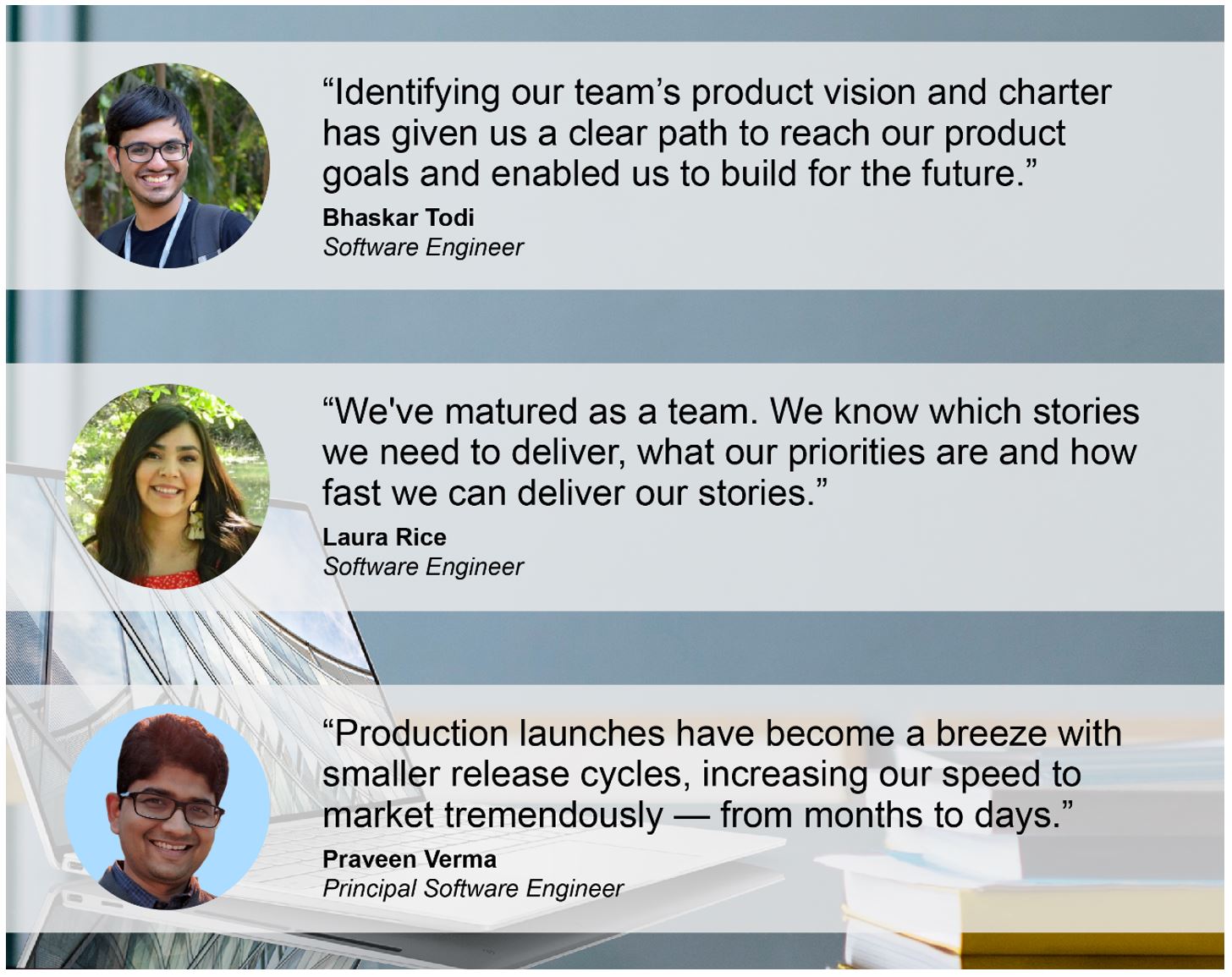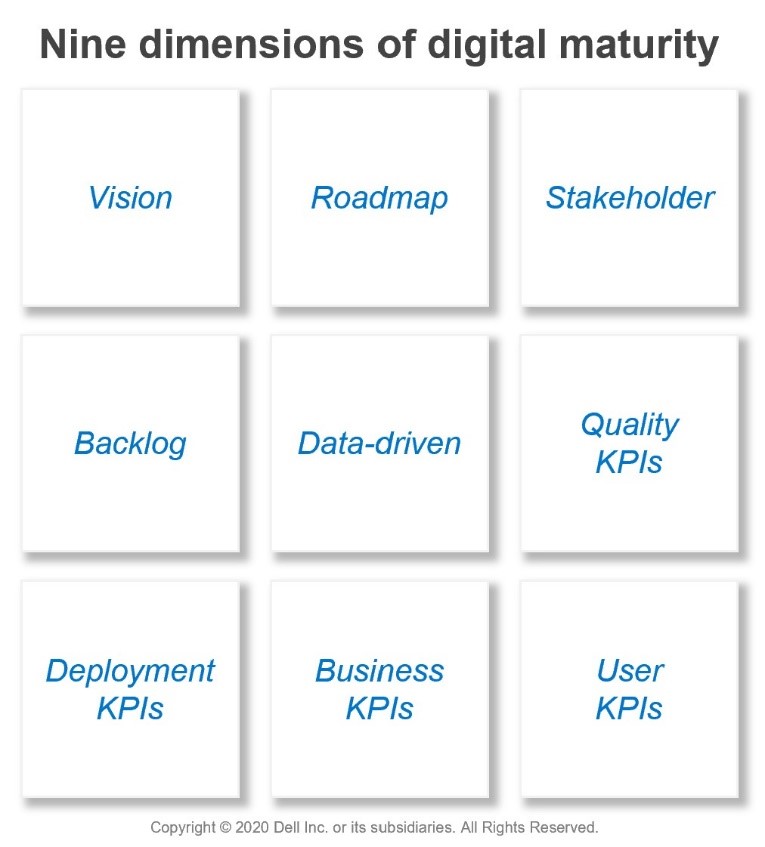The unprecedented upheaval of 2020 presented a crossroads for IT organizations: pause transformation efforts or accelerate them to deal with the complexities of the day.
In Dell Digital, the IT organization supporting Dell Technologies, we saw this as an opportunity to emerge stronger. Three years into our transformation, we leaned further into change. And like many of our customers, we have achieved in a few short months, what would normally take years.
While transitioning more than 150,000 team members to work from home, we made three significant strides in transforming our IT organization. Here’s what we did and how it’s working for us:
Adopted the Product Model
Historically, we’ve operated in project-based model, which has created a complex and expensive technology ecosystem. By shifting to a product model this year, we’ve empowered our teams to apply modern methodologies and technologies to develop and deliver high-quality, secure software collaboratively and iteratively with our business partners.
Since adopting the product model, teams are more responsive to customer and business needs and more productive. Don’t take my word for it — here’s what they have to say about it:

Reimagined the Developer Experience
Shifting from traditional waterfall project implementations to an agile product-driven approach requires reimagining the software development lifecycle and infrastructure. We established four guiding principles to design our new experience:
- Technology-agnostic: With more than 3,000 applications in our ecosystem, our DevOps platform must support a wide variety of technology stacks.
- Automate everything: Embed security and standards in our automated pipeline ensures compliance while eliminating wait time and bureaucracy. With a multitude of our standards built into our deployment tools, developers have guided choices which gives them time to focus on functional code.
- Self-service: Provide XaaS to reduce the need for manual interactions with dependencies and enable product teams to operate autonomously. Five years ago, it could take a developer more than 12 weeks to provision the infrastructure environment before the development process could begin. Today, developers using our own Dell Digital cloud services and API marketplace, can provision an environment in less than 30 minutes.
- Measurement: Increase visibility to software deployment accomplishments and opportunities via a custom-built DevOps assessment dashboard that sits on top of our DevOps platform. This provides all development and leadership teams insight into how efficiently teams are working as well as adherence to our 12-factor development process and security compliance standards. In addition to scoring deployments, the assessment is a feedback mechanism, providing recommendations to improve aspects for future deployments.
When teams own their products and are empowered to operate autonomously, they inherently are more productive and deliver higher quality and more secure software. We’ve seen a 50% YoY increase in feature deployments and are now averaging 3,500 production deployments using our Continuous Integration Continuous Deployment pipelines per month.
Ensured Continuous Improvement

Our transformation was designed to drive a cultural shift in how we work called the Dell Digital Way. To measure our success against this outcome, we designed a quarterly assessment to identify teams’ maturity level across nine dimensions of working in the Dell Digital Way.
The Product Operations Maturity Assessment ensures we sustain value delivery by identifying the opportunities that exist for teams to continuously improve, while enabling leaders to identify trends to help them increase skills and support their teams at scale. To date, 97% of our product teams have benchmarked their maturity — and in less than a year, we have teams that are already proving to operate at the level we define as “working in the Dell Digital Way.”
A Strong Foundation for the Digital Future
2020 has tested all of us in many ways. For Dell IT, it’s been a testament to the strong foundation we’ve built transforming our people, process and technology to drive a massive culture change across the organization.
This year has proven our ability to pivot quickly, meet rapidly changing demands and identify where we need to double down for future growth. We’re emerging stronger, with a more resilient culture that’s ready for the digital future, because the only thing we know for sure is that the future promises to bring more change. Beyond any technology, it’s our culture, and our ability to adapt and lean in that will dictate our success.
On a personal note, after leading the acceleration of transformation for the last three years, I am excited to build on the progress we’ve made in a new role focused on the digital customer experience. A pioneer of eCommerce, Dell revolutionized the configure-to-order experience for millions of PC customers —but, over 30 years, our ecosystem has grown fragmented and complex. I’m honored to lead the effort to unify our digital footprint and provide our customers an experience worthy of our legacy of innovation. I look forward to sharing the lessons learned with you on this new journey.
Learn more about our transformation by watching the presentation by Jen Felch, Chief Digital Officer and CIO, and Greg Bowen on Dell IT: Building a Digital Future through Application Transformation This session was presented at the Dell Technologies World Experience October 2020.



